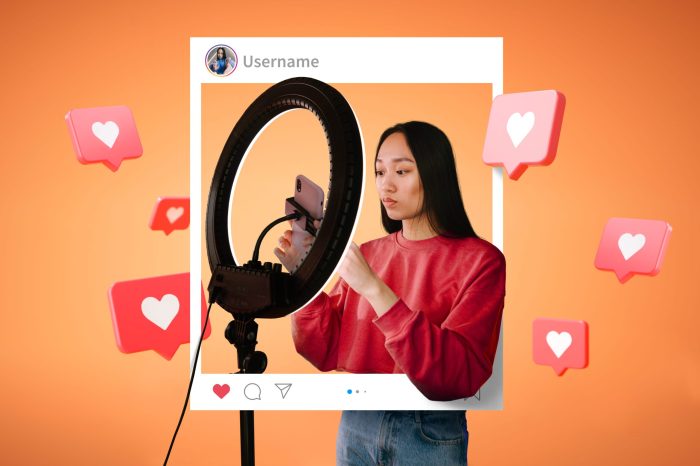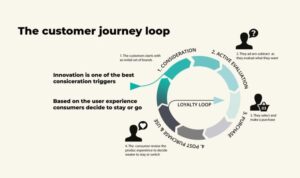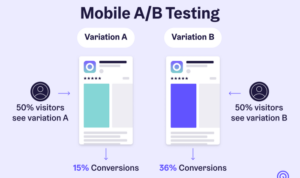Influencer Marketing Guide sets the stage for navigating the world of social media influencers like a boss. Get ready to dive into a world where creativity, strategy, and authenticity collide to elevate your brand presence.
From defining influencer marketing to measuring ROI, this guide covers all the bases to help you ace your influencer game.
Overview of Influencer Marketing: Influencer Marketing Guide
In today’s digital landscape, influencer marketing has become a powerful strategy for brands to connect with their target audience through social media platforms. Influencer marketing involves collaborating with individuals who have a large following and influence over their followers’ purchasing decisions.
Benefits of Influencer Marketing
- Increased Brand Awareness: By partnering with influencers, brands can reach a larger audience and increase their visibility.
- Authenticity and Credibility: Influencers can provide genuine recommendations and testimonials, making the brand more trustworthy in the eyes of consumers.
- Targeted Reach: Influencers have specific niches and demographics that align with the brand’s target market, ensuring that the message reaches the right audience.
- Engagement and Conversion: Influencers can create engaging content that resonates with their followers, leading to higher conversion rates for the brand.
Difference from Traditional Marketing Approaches
- Personalized Approach: Influencer marketing focuses on building relationships with individual influencers, creating a more personalized and tailored marketing strategy.
- Social Proof: Influencers act as social proof for the brand, showcasing real-life experiences and endorsements that traditional marketing methods may lack.
- Interactive Content: Influencer marketing often involves interactive content such as giveaways, challenges, and live streams, enhancing audience engagement and participation.
- Measurable Results: Influencer marketing allows for more precise tracking of ROI and performance metrics compared to traditional marketing channels.
Types of Influencers
When it comes to influencer marketing, there are different types of influencers that brands can collaborate with to reach their target audience. These include mega, macro, micro, and nano influencers, each with their own characteristics and reach. Let’s dive into each type to understand how they can impact a marketing campaign.
Mega Influencers
Mega influencers are typically celebrities or well-known personalities with a massive following on social media platforms. They have millions of followers and can reach a wide audience with a single post. An example of a successful campaign with a mega influencer is Kylie Jenner collaborating with brands like Adidas and Fashion Nova.
Macro Influencers
Macro influencers have a substantial following, although not as large as mega influencers. They are often industry experts, bloggers, or social media personalities with hundreds of thousands of followers. A successful campaign example with a macro influencer is Chiara Ferragni partnering with brands like Lancôme and Pomellato.
Micro Influencers
Micro influencers have a smaller but highly engaged audience within a specific niche. They are considered experts in their field and have a more personal connection with their followers. An example of a successful campaign with a micro influencer is Emily Weiss collaborating with Glossier and Estée Lauder.
Nano Influencers
Nano influencers have the smallest following among all influencer types, typically ranging from 1,000 to 10,000 followers. Despite their smaller reach, nano influencers have a highly engaged and loyal audience. Brands like HelloFresh and Mejuri have successfully partnered with nano influencers to promote their products.
Finding the Right Influencers
Finding the right influencers for your brand is crucial for a successful influencer marketing campaign. It’s not just about the number of followers an influencer has, but also about their relevance to your target audience and their alignment with your brand values.
Identifying Relevant Influencers
When looking for influencers, consider factors such as their niche, engagement rate, and authenticity. Look for influencers whose content resonates with your brand’s message and values. Conduct thorough research to ensure they are a good fit for your brand.
- Look for influencers who have a genuine interest in your industry or product.
- Consider influencers who have a high engagement rate with their audience.
- Check if the influencer’s values align with your brand’s values to maintain authenticity.
Tools and Platforms for Finding Influencers, Influencer Marketing Guide
There are various tools and platforms available to help you find and connect with influencers. These tools can streamline the process and provide valuable insights into influencer performance and audience demographics.
Platforms like Influencity, Upfluence, and AspireIQ can help you identify influencers based on your specific criteria.
- Use social media analytics tools to track influencer performance and audience demographics.
- Collaborate with influencer marketing agencies to leverage their network and expertise in finding the right influencers.
- Engage with influencers on social media platforms to build relationships and gauge their interest in collaborating with your brand.
Influencer Marketing Campaign Strategies

When it comes to creating a successful influencer marketing campaign, there are several key steps to keep in mind. One of the most important aspects is setting clear goals and KPIs (Key Performance Indicators) for the campaign. These metrics will help you measure the success of your campaign and determine if it is meeting your objectives.
Importance of Setting Clear Goals and KPIs
It is crucial to establish clear goals and KPIs for your influencer marketing campaign to ensure that you are driving the desired results. By setting specific objectives, you can track the performance of the campaign and make adjustments as needed to optimize its effectiveness. Some common goals for influencer campaigns include increasing brand awareness, driving website traffic, generating leads, or boosting sales.
- Define your objectives: Clearly Artikel what you hope to achieve with your influencer marketing campaign, whether it’s increasing brand visibility or driving conversions.
- Identify relevant KPIs: Determine which key metrics will indicate the success of your campaign, such as engagement rates, click-through rates, or conversion rates.
- Track and analyze results: Monitor the performance of your campaign in real-time and analyze the data to see if it aligns with your goals and KPIs.
Creative Campaign Ideas
To stand out in the crowded influencer marketing landscape, it’s important to come up with creative campaign ideas that resonate with your target audience and drive results. Here are some examples of innovative influencer marketing campaigns that have yielded positive outcomes:
- Collaborative content creation: Partner with influencers to co-create engaging and authentic content that showcases your brand in a unique way.
- Limited-time offers: Create exclusive discount codes or promotions that are only available through influencer channels to drive urgency and encourage conversions.
- User-generated content campaigns: Encourage influencers and their followers to create and share user-generated content featuring your products or services, leveraging authentic social proof.
Legal and Ethical Considerations

When it comes to influencer marketing, there are important legal and ethical considerations that brands and influencers need to keep in mind to ensure transparency and compliance with regulations.
Legal Guidelines and Regulations
- FTC Guidelines: The Federal Trade Commission (FTC) in the United States requires influencers to disclose their partnerships with brands clearly. This means using hashtags like #ad or #sponsored to indicate paid content.
- ASAI Code: In Ireland, the Advertising Standards Authority for Ireland (ASAI) has guidelines that influencers must adhere to, including disclosing partnerships and ensuring that ads are not misleading.
Importance of Transparency and Disclosure
- Building Trust: Transparency in influencer partnerships helps build trust with followers, as they know when content is sponsored and can make informed decisions.
- Legal Compliance: Failure to disclose paid partnerships can result in fines and penalties for both brands and influencers, so it’s crucial to be transparent.
Best Practices for Compliance
- Clear Disclosures: Use clear and prominent disclosures like #ad or #sponsored at the beginning of captions or posts to ensure compliance with regulations.
- Honesty: Be honest with your audience about partnerships and only promote products or services that you genuinely believe in.
- Stay Informed: Regularly review and stay updated on the guidelines and regulations set by relevant authorities to ensure compliance in influencer marketing campaigns.
Measuring Influencer Marketing ROI
Influencer marketing ROI can be measured in various ways to determine the success and effectiveness of campaigns. It is crucial to track and analyze different metrics to evaluate the impact of influencer collaborations.
Engagement Metrics
- Track likes, comments, shares, and overall engagement on influencer posts to gauge audience interaction and interest.
- Monitor click-through rates (CTRs) to measure how many users are taking action after seeing influencer content.
- Analyze reach and impressions to understand the number of people exposed to the influencer’s posts.
Conversion Tracking
- Utilize unique tracking links or discount codes provided by influencers to measure direct sales generated from their content.
- Implement conversion tracking pixels to attribute conversions to specific influencer campaigns and optimize for better results.
- Calculate return on ad spend (ROAS) by comparing the revenue generated from influencer marketing to the investment made in the campaign.
Brand Sentiment Analysis
- Monitor brand sentiment and customer feedback before, during, and after influencer collaborations to assess the impact on brand perception.
- Use sentiment analysis tools to evaluate the tone and sentiment of conversations surrounding the brand after influencer partnerships.
- Measure brand mentions and sentiment in social media conversations to understand the overall sentiment towards the brand post-campaign.





